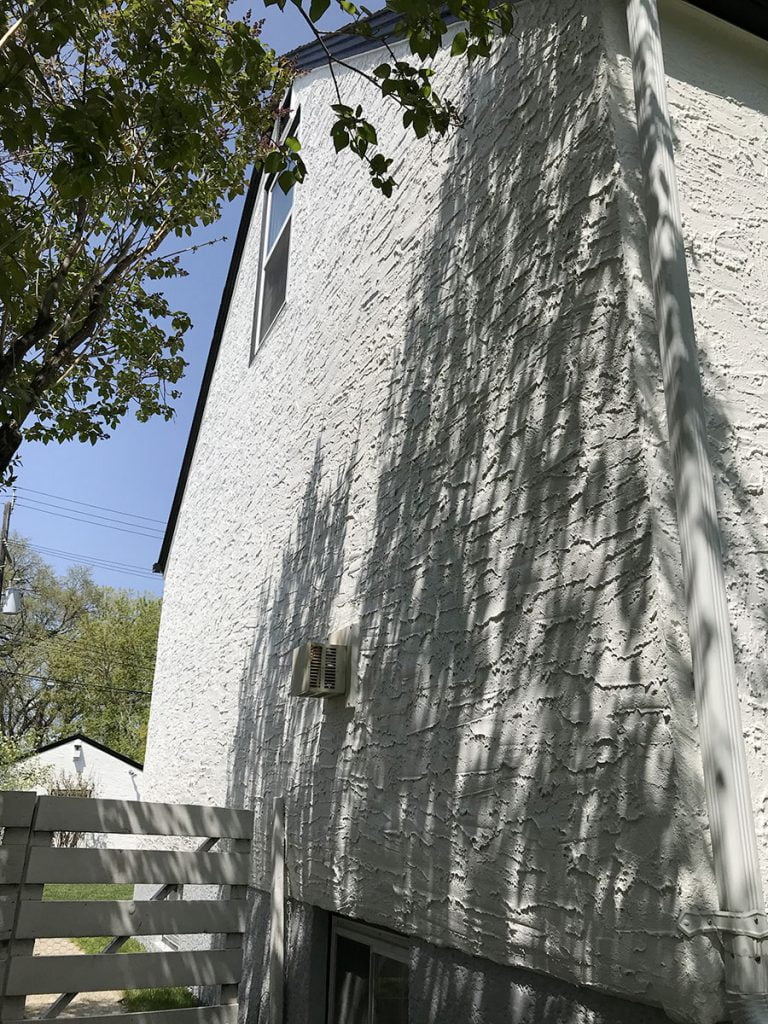14 May Stucco In Winnipeg
The architecture of a city can tell you a lot about it; how old it is, what it’s climate is like, and it’s culture. Looking around any of the suburbs made from the 50s to the 80s in Winnipeg (and beyond), you’re more than likely to see a lot of stucco. Stucco is basically a cement plaster that’s adhered to a material; the material it’s adhered to is called the substrate. It’s plastered onto the substrate in layers, so when you start to get stucco problems, they can be a bit difficult to resolve. Here’s the question: why do we have so much stucco in Winnipeg, and how do we keep it looking its best?

There are a number of advantages to stucco. First, it adds texture to the exterior and can add a dignified air to your home. Second, the stuff is actually pretty durable; after all, it is a cement plaster with added materials, like acrylics, in order to make it more flexible and long-lasting. Winnipeg’s climate is certainly something to consider; stucco acts as quite a good insulant, and folks with stucco interiors will likely have to pay less for their heating and cooling costs. While stucco is a bit more expensive than some other siding options, it’s longevity and insulating properties make it a pretty good value proposition.
There are disadvantages to stucco, though. The main one is that cement is naturally porous, and stucco is too. That means that high humidity can cause a lot of problems for your siding, causing the stucco to crumble. Fortunately, Winnipeg is a relatively dry city; we don’t have a ton of precipitation each year. The problem comes when snow builds up and melts around the stucco; for that reason, it’s sometimes advised that the base of your siding be made of a different material, like brick, with the stucco starting a bit higher up. For those with stucco near the base of their homes, take care to try and leave as little snow around the stucco as possible; if you can, shovel it away to another part of the yard.
When your stucco is looking a bit rough, or not to your taste, there’s a wonderful way of sprucing it up: stucco painting. The process involves elastomeric paint, which is a high density, highly elastic acrylic paint. On one of our previous blog posts, we already said we recommend this paint pretty highly for a number of Winnipeg exteriors; it’s particularly well suited to stucco. We’ll take care of patching the stucco before we paint it, too, using a stucco repair mix; that way, the paint all goes on evenly. The paint not only acts to make your stucco look better; it also makes it more durable by reducing its exposure to the elements. Properly painting stucco is a tricky proposition, but when done right, it can look absolutely stunning; let us show you what we mean.
